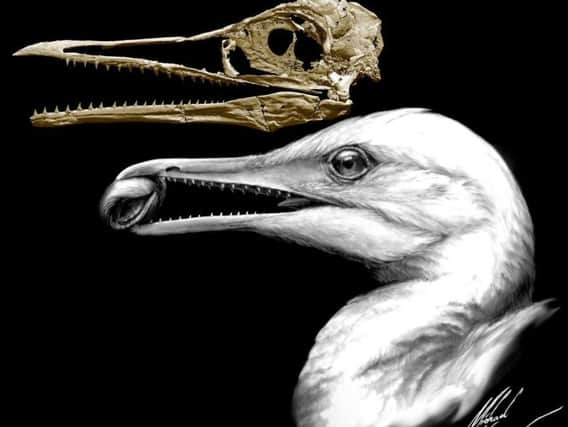Discovery represents pivotal moment between dinosaurs and modern birds


Scientists have pieced together the skull of a toothed seagull-sized bird – and the rare 3D fossil of Ichthyornis dispar, which lived in North America around 86 million years ago, reveals that the first bird beaks had teeth.
It was discovered in the 1870s and drew the attention of such famous naturalists as Yale’s OC Marsh and Charles Darwin.
Advertisement
Hide AdAdvertisement
Hide AdA team led by scientists from the universities of Bath and Yale have found an example of a complete skull and two previously overlooked cranial elements that were part of the original specimen at Yale and analysed them using CT scans.
Dr Daniel Field, from the University of Bath, said: “The fossil record provides our only direct evidence of the evolutionary transformations that have given rise to modern forms, but most fossils are squashed flat during the fossilisation process, making it almost impossible to study the anatomy of the brain and details of the skull. This extraordinary new specimen reveals similar brain proportions to that of a modern bird, but other parts of the skull more closely resemble the skulls of predatory dinosaurs.
“In modern birds, the beak is made up of a small region called the maxilla and a larger area called the pre-maxilla.
“In contrast, the beaks of dinosaur-like early birds such as Archaeopteryx, which lived 150 million years ago, were mostly made up of the maxilla. The skull of I. dispar was a cross between the two and its beak had a large maxilla with teeth and small pre-maxilla.”
Advertisement
Hide AdAdvertisement
Hide AdYale paleontologist Bhart-Anjan Bhullar said the fossil showed what the bird beak looked like as it first appeared in nature.
“Right under our noses this whole time was an amazing, transitional bird. It has a modern-looking brain along with a remarkably dinosaurian jaw muscle configuration,” he said.